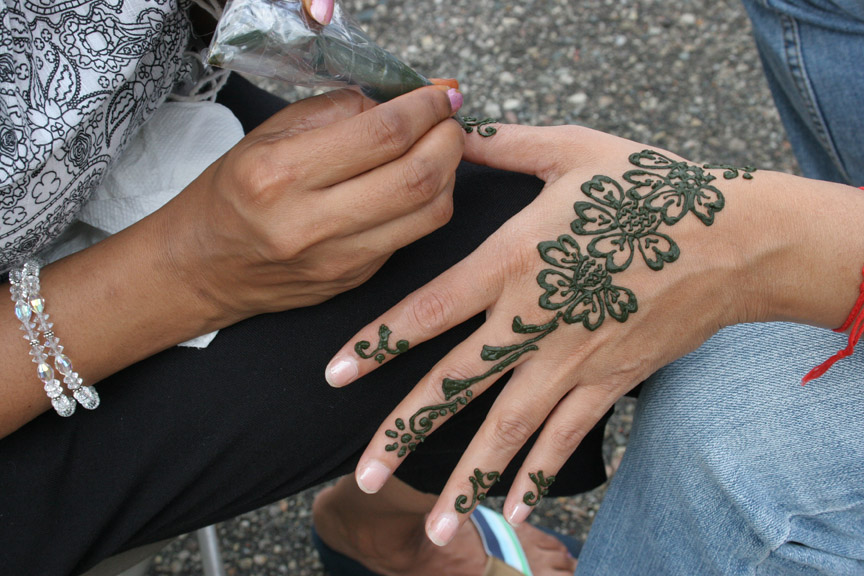Art Form: Mehndi and Indian/Indian American cultural traditions
Location(s): East Lansing (Ingham County)
Anshu Varma

Anshu Varma applying henna to the hand of her assistant at the Great Lakes Folk Festival

Anshu Varma applying henna
Anshu Varma was born in north India and grew up in Calcutta and New Delhi. As a child she was fascinated by the tradition of mehndi, an art forms using paste made from henna leaves to decorate the hands and feet with ornate patterns. Greatly inspired by her mother's artistic creations, Anshu learned the art of mehndi at home, where a henna plant grew in her backyard.
Henna plays an important role in maintaining cultural and traditional identity in India. The tradition in India is associated especially with wedding ceremonies where putting henna on the bride's palms and feet represents "dressing" the bride. It is, however, appropriate to be decorated with henna at all festive events.
Today, Anshu is a master of the art form. She moved to Michigan in the 1980s, and has worked diligently to share mehndi and other Indian cultural traditions widely. She created a lesson plan in 2008 for teaching high school students about henna, which she teaches at libraries and museums statewide. Henna gives her an opportunity to set the stage for informal discussions about India, its cultural heritage, and time honored traditions. She passed on these traditions through the receipt of Michigan Traditional Arts Apprenticeship awards in 2002 and 2003. She has been a regular participant at the Great Lakes Folk Festival for over a decade where, for a small fee, she "dresses" visitors with mehndi, generously donating these fees to the Michigan State University Museum in support of the Great Lakes Folk Festival.
- Micah Ling, 2017





